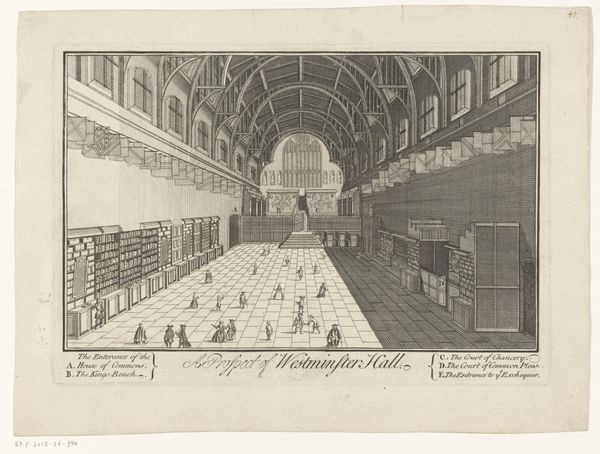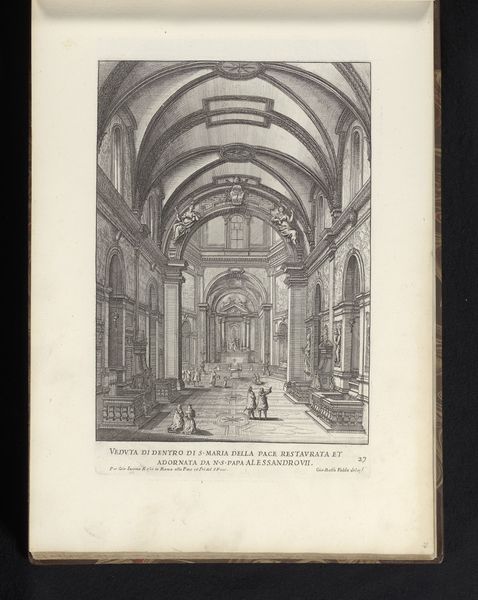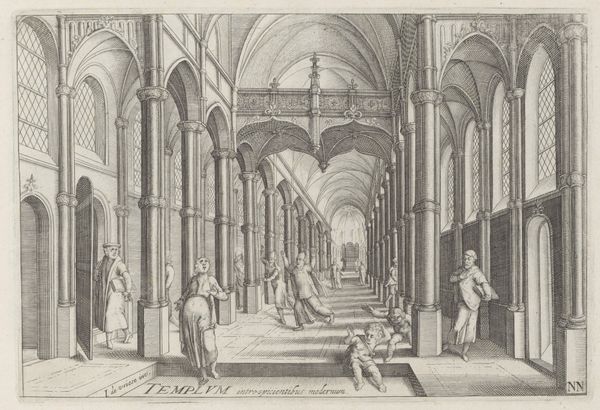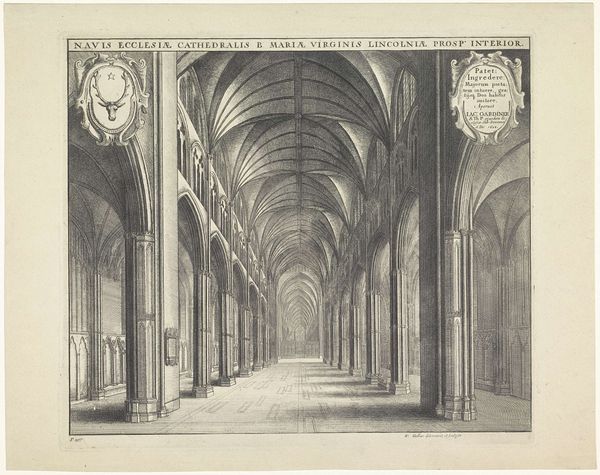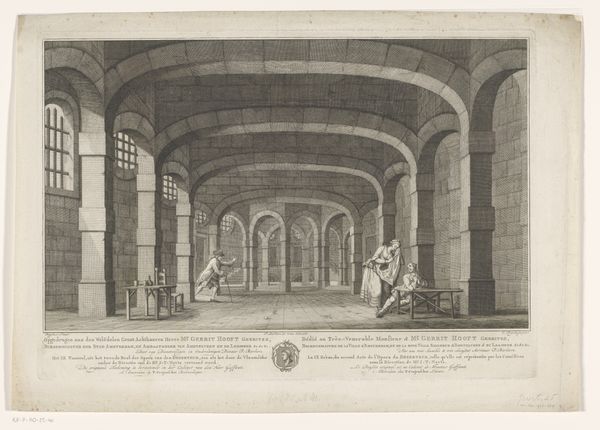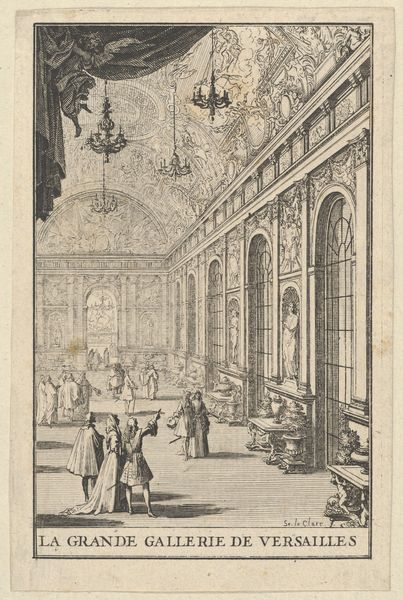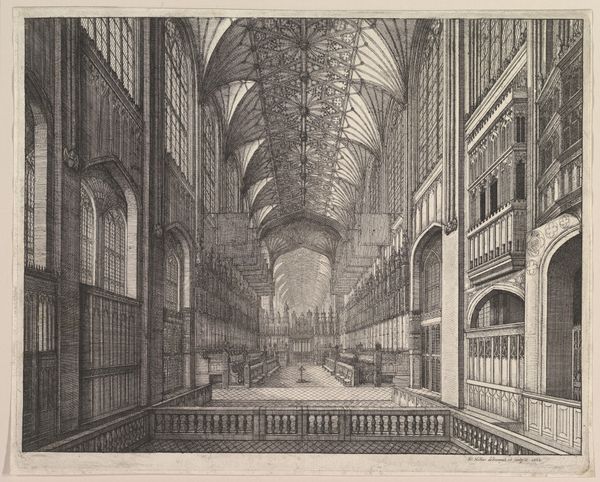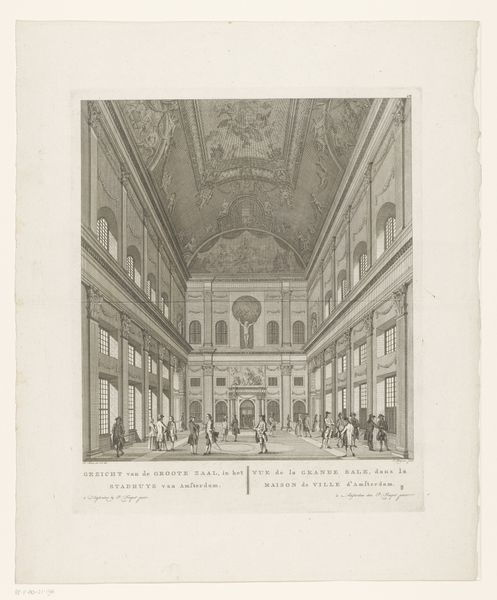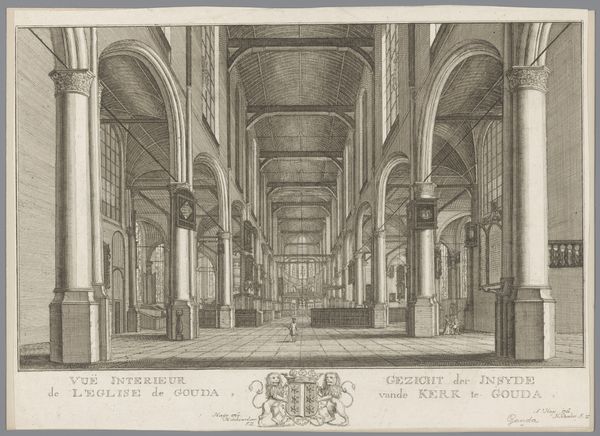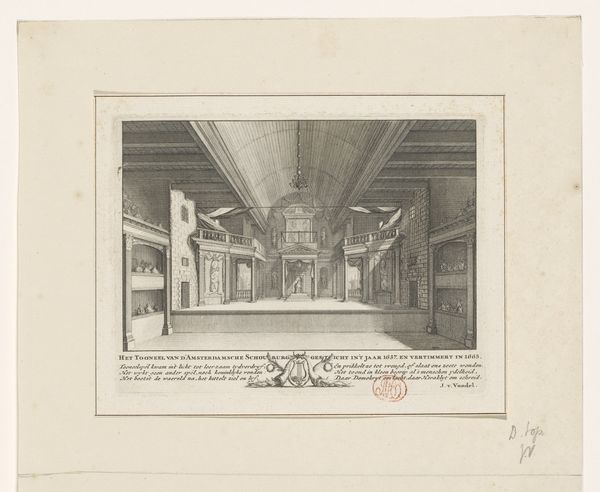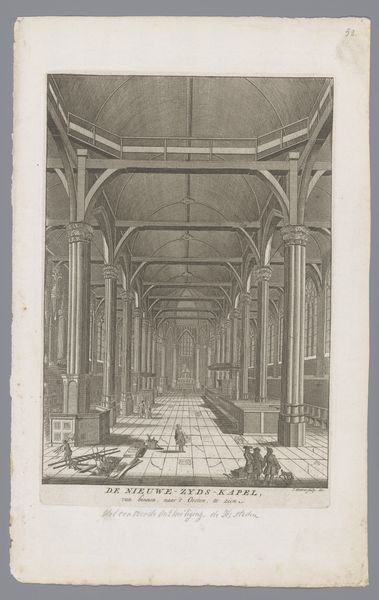
Dimensions: height 303 mm, width 216 mm
Copyright: Rijks Museum: Open Domain
Curator: This print, likely from 1719, is titled "Interieur van de Wasserkirche te Zürich" or "Interior of the Wasserkirche in Zurich" by Johann Melchior Füssli. It's an engraving that provides a detailed view into the church. What are your initial impressions? Editor: It's undeniably impressive. The sheer scale, the soaring height emphasized by the engraving style… but it feels almost unsettling. The space seems more like a temple to knowledge, with those endless rows of books lining the walls. The figures are so small, almost lost in the architecture. Curator: Indeed. The Wasserkirche itself has a fascinating history. It's said to have been built on the site of a Roman bath, later becoming a site of Christian martyrdom. Füssli's rendering, part of the Baroque style with elements of the later German Expressionism movement, captures not just the space but the evolving power dynamics associated with it. The placement of the books, and the way the light falls. What do you make of it? Editor: I find myself wondering about the accessibility of that "knowledge". Who had access to those books, to that space? Look at the composition—the two figures in the foreground almost seem like guards, surveying the realm of knowledge. Are they gatekeepers, or guides? And who were the figures in the round table discussion located at the very back of the engraving? I suspect only privileged men could occupy this intellectual and literal space. Curator: It’s important to remember that libraries in this period weren't public institutions as we know them today. Access would have been limited to scholars, theologians, and members of the upper classes. Füssli's work then offers a glimpse into the intellectual life of a very specific segment of Zurich society. The use of architecture adds to the sense of importance as much as restriction in terms of what lies within. Editor: Yes, and what's also worth noting is the implied relationship between sacred and secular spaces. This church isn't just a place of worship. It holds books, learning, power. It’s a symbolic blending, or perhaps even a contest between faith and reason during that era. The lighting makes it feel almost forbidding, hiding something in the shadows beyond just books. Curator: A potent point. The engraving really encapsulates the Baroque period's fascination with perspective, grandeur, but also, with the tensions between various forms of authority. Editor: Precisely. This piece, at first glance, looks like a simple architectural depiction. However, when we dig deeper and apply different frames, it encourages us to look into not only what is literally displayed but also what's deliberately kept at bay. Curator: Exactly. Thank you, I see it through a new lens as well.
Comments
No comments
Be the first to comment and join the conversation on the ultimate creative platform.
